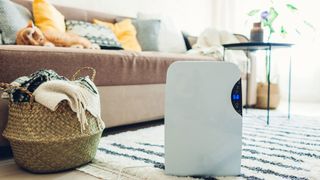What is ozone, and why is it damaging?
Ozone is a gas that occurs naturally in our atmosphere and unnaturally at ground level. When it occurs naturally in the atmosphere, ozone acts as a protective layer against the sun’s harmful UV rays. Nearer to ground level, ozone is created when air pollutants are expelled from power plants, cars, etc., and react chemically to the sunlight - hence ozone creation is more common during summer months. On the other hand, ground-level ozone is harmful to the respiratory system, especially your lungs. According to the EPA, ozone has been known to reduce lung function, exacerbate asthma and make your lungs more vulnerable to infection. Basically, it’s pretty dangerous stuff. Ozone generators take the air in your home and apply an electrical charge, which splits the oxygen (O2) in your home into unstable atoms. These atoms can bond with many atoms in your home, including those which create odors (therefore eliminating them), but they will also bond with regular oxygen to create ozone (O3). The FDA requires that indoor medical devices can only produce a maximum of 50 ppb (parts per billion) of ozone. The National Institute of Occupational Safety and Health recommends that indoor ozone levels should not be greater than 100 ppb. This is only a fraction of the ozone a generator will create to eliminate odors.
Air purifiers vs. ozone generators
Ozone generators are mainly marketed for their ability to remove unwanted odors from a room, and it’s true that the creation of ozone can eliminate pesky cooking, pet-related or smoke odors. However, if you are truly looking to purify the air, look closely for air purifiers that advertise ozone-free technology. Air purifiers are very different to ozone generators because they use a filter to remove pollutants from the air, then push the clean air out into your living space again. When purchasing an air purifier, look for a filter that is UL listed, has an ETL mark or is certified by the Association of Home Appliance Manufacturers. All of these organizations, though not government run, are independent companies that test for safe levels of ozone production and compliance with other safety codes. Best air purifiers 2023: Including HEPA air purifiers for allergies Best mold test kits 2023 Best humidifiers 2023: Top-rated models from Honeywell, Boneco and Vicks Reviews Coway AP1512HH air purifier review Winix HR900 Ultimate Pet Air Purifier review Honeywell HPA300 air purifier review Rabbit Air MinusA2 review Levoit Core 400S review Blueair Blue Pure 211+ air purifier review Levoit H132 review For further information on ozone, its effects, and indoor air pollution, we recommend visiting www.aafa.org, www.epa.gov and www.airnow.gov to read the latest research.
